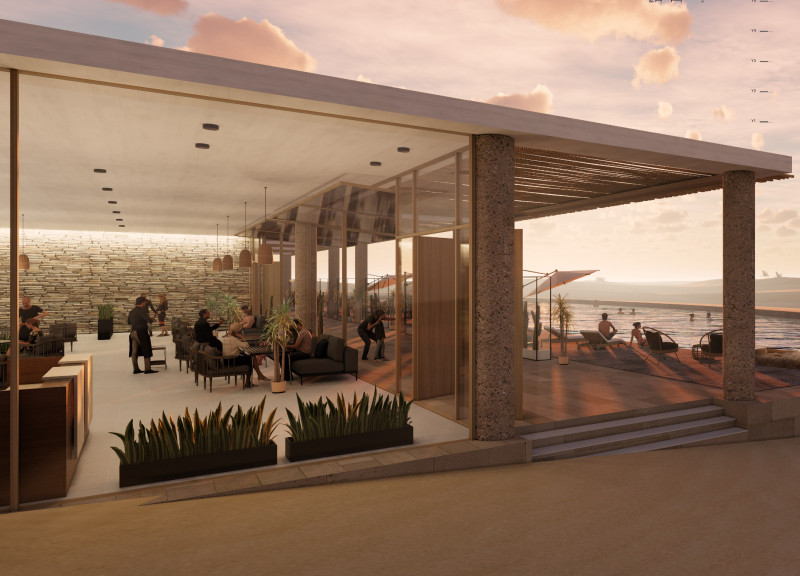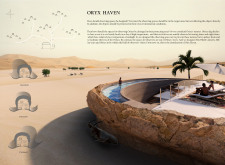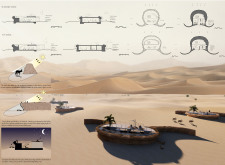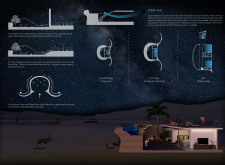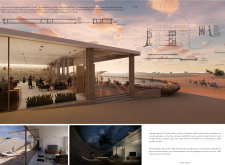5 key facts about this project
Oryx Haven is located in the expansive desert of Abu Dhabi, where it aims to facilitate a unique interaction between guests and the local Oryx population. The design prioritizes wildlife conservation while providing a peaceful retreat for visitors. By blending hospitality with ecological consideration, the different spaces are designed to ensure that observing areas do not disturb the natural behaviors of the Oryxes and respect their habitat.
Lodges and Observation Spaces
The project includes Standard and V.I.P. Lodges, each with terraces that extend the living area outdoors. These terraces serve as observation points for guests during the day, offering views of the Oryxes in their natural surroundings. At night, the terraces shift their purpose, becoming ideal spots for stargazing. This dual function enhances the experience for visitors and deepens their connection to the desert environment.
Spatial Configuration
Curved forms define the layout of the lodges, creating a relaxing flow between public and private spaces. This design lowers visibility between guests and wildlife, which helps to maintain the comfort of the Oryxes while allowing guests to enjoy observing them. The arrangement promotes a calm atmosphere, ensuring that the needs of both visitors and the local wildlife are respected.
Environmental Considerations
Ventilation has a significant role in Oryx Haven’s design. The architects implemented manual systems to help control the internal climate. Rock structures are carefully placed to block direct sunlight, protecting the Oryxes from overheating. Each lodge features adjustable lifting windows that allow cool air to flow in, offering a connection with the outdoor climate while ensuring guest comfort.
Functional Hub
A central Hub separates areas for guests from those designated for staff, housing essential services without affecting the visitor experience. This area includes reception, storage, and lounges, facilitating effective movement throughout the site. The design addresses operational needs while allowing guests to engage with the surroundings meaningfully.
The use of rock in the construction not only serves practical functions but also connects the built environment with the natural landscape. In this carefully designed space, the relationship between human activity and wildlife conservation is clear, revealing how architecture can enhance the understanding of and respect for the environment.


